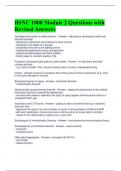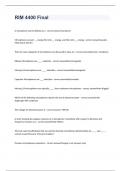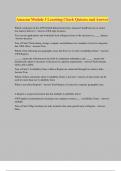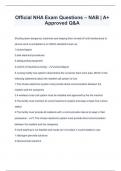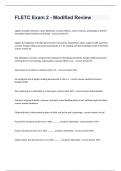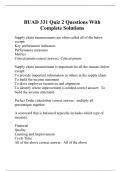Exam (elaborations)
BSNC 1000 Module 2 Questions with Revised Answers
- Course
- Institution
BSNC 1000 Module 2 Questions with Revised Answers Developmental tasks for older persons - Answer-- adjusting to decreasing health and physical strength - adjusting to retirement and reduced or fixed income - adjusting to the death of a spouse - accepting one's self as an ageing person - ma...
[Show more]
